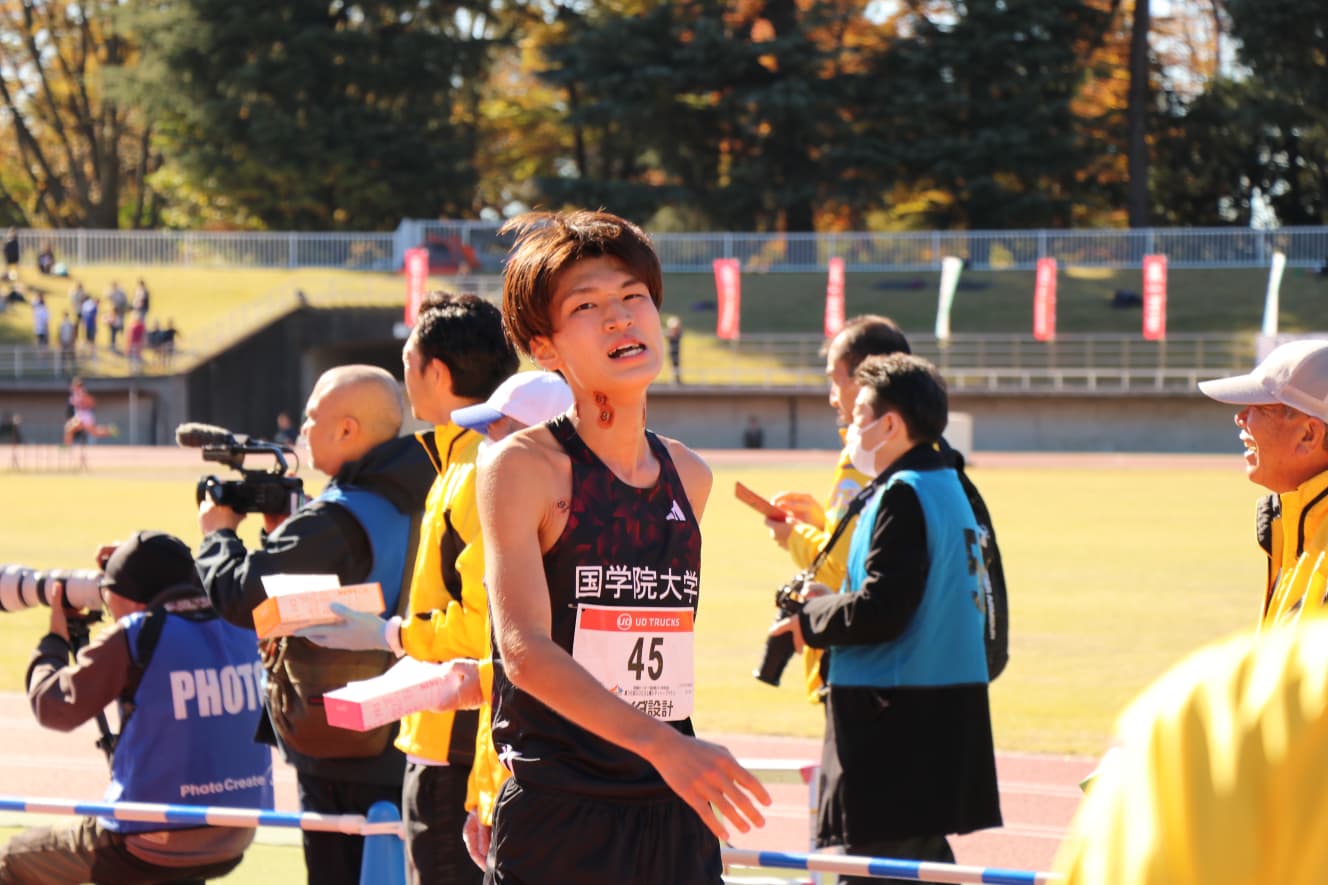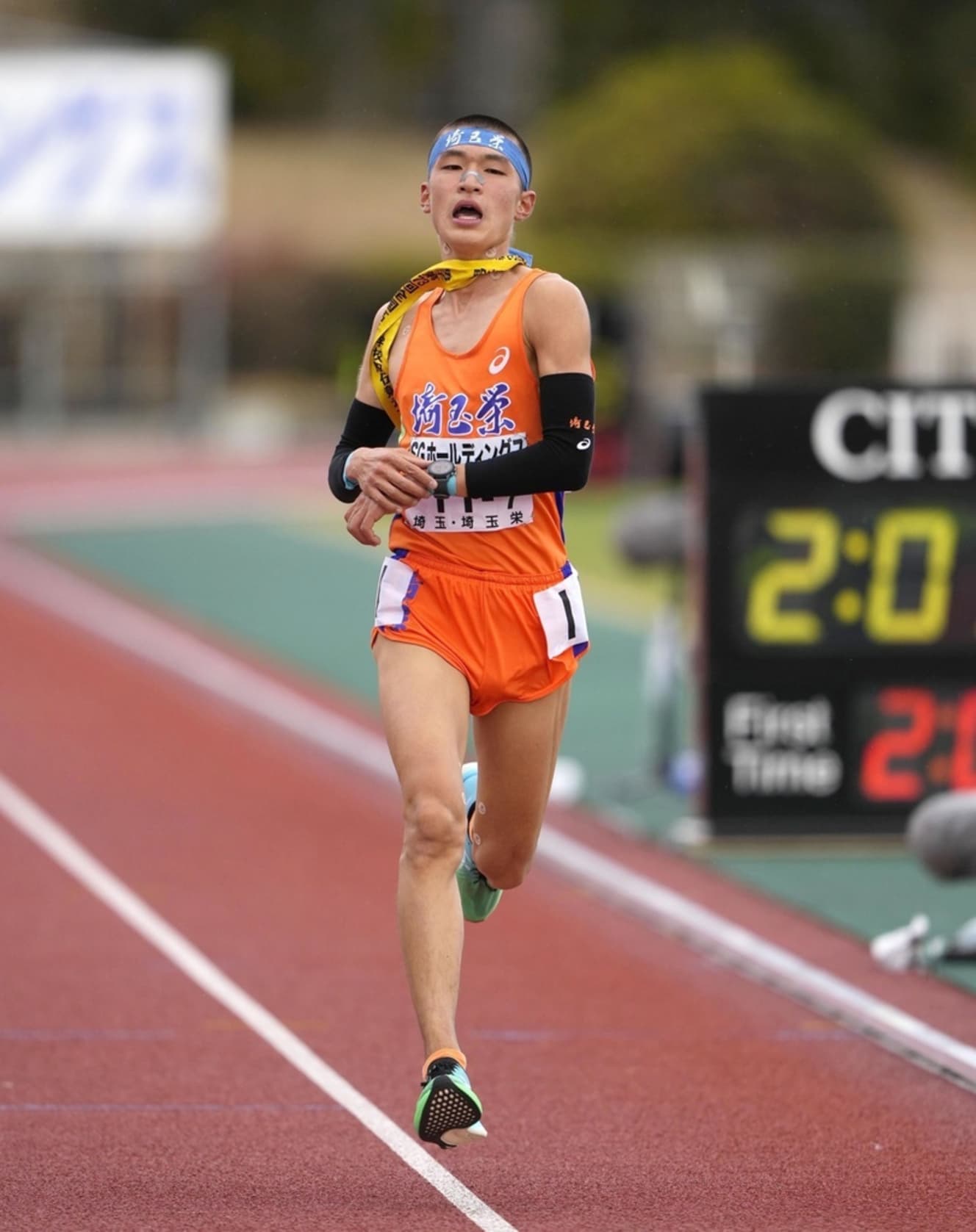Kokugakuin University members aiming for their first HAKONE EKIDEN victory.

Kokugakuin University, which is becoming a powerhouse in the Hakone Ekiden, is eager to achieve its long-cherished goal in the 100th event: 4th place in the Izumo Ekiden in October and 3rd place on the podium in the All Japan University Ekiden in November. The team’s coach Yasuhiro Maeda, now in his 14th year in the post, is confident as he prepares for the New Year’s big event.
We have the best lineup ever. Our goal is to finish third or higher overall, which would be the best in Kokugakuin’s history, and we are also looking for our first overall victory as we formulate our strategy.
The core of the team consists of the “three pillars” of Kenzo Ijichi (4th year), the captain, who is one of the best runners in the university, Kiyosumi Hirabayashi (3rd year), and Ayumu Yamamoto (3rd year), the ace, and the four second-year students led by Ryusho Uehara, who finished in the top five in both the Izumo Road and Ise Road races. While runners with proven track records in ekiden are all lined up, five first-year runners are also members of the entry team. Not only Kousei Gomura, who ran well in the first section of the All-Japan race, coming in 6th in the section. The team leader was pleased to see the rise of the first-year students.
He said, “I did not choose the first-year students with an eye on the future, but based on their abilities. Until a few years ago, Kunitachi Gakuin was a team in which the fourth-year students showed their strength, but today’s first-year students easily surpass them. They are all in great shape. I want to find out until the very last minute how the sections will be arranged and who will run.
One of the secret weapons is freshman Kuranosuke Yoshida, who was not even a member of the Ekiden team until November. His father is Okura, leader of the popular music group Ketsumeshi, and although he is often the subject of media coverage, he does not show any signs of displeasure, and is quite matter-of-fact about it.
I myself don’t pay much attention to the media coverage,” he says, “and I’m just working on my athletics.
When his good friends tease him, saying, “Kuranosuke, bring your father with you when you go out for karaoke,” he always smiles and dodges the taunts. He is a talker and is often at the center of the circle, helping to enliven the first-year students.
However, his attitude toward competition is serious. In the first half of this year’s track season, she did not achieve the results she had hoped for, and once burst into tears in a race where her family was cheering her on, out of the public eye. Nevertheless, he has steadily and diligently practiced to improve his strengths. He has always excelled at the Hakone Road distance of more than 20 km per section. From the summer, I had been talking with coach Maeda about it.
I said to him, ‘I want to compete in the half marathon. At that time, he said, ‘I can’t run in the (shorter distance) Izumo and All-Japan, but are you still okay with that?’ But I told him that I was thinking only of Hakone.

Yoshida ran the Tokyo Legacy Half Marathon in October to gain experience. This was her first race of 21.0975 km, and she did a fair job. Then came the Ageo Half Marathon in November. Two weeks prior to the race, Maeda had set a clear standard for the race: “To make the entry list of 16 runners,” he said.
To make the 16-member entry list, you must run at least 1 hour and 2 minutes, and the 10 regular runners must run under 1 hour and 2.5 minutes.
Yoshida achieved a perfect result in the trial race, which also served as a selection test for the Hakone team members. She showed the results of her training by working hard to keep up with her seniors, and marked a time of 1:02:29, the fastest time by a first-year student at Kokugakuin. He was able to gain a solid response, and was able to make the entry list.
I was able to break my goal of 1 hour, 2.5 minutes,” he said. In my case, the longer the time, the more strength I can bring out. I can push at a steady pace.
His brisk tone of voice exudes confidence. With the race approaching, he was expanding his image of running on the Hakone Road. The memory of watching the race with his classmates from Saitama Sakae High School is also vividly etched in his mind. The overflowing crowd of spectators and their enthusiastic cheering. I still remember the feelings I had along the way.
I thought, “I want to run here, too. My family would come to cheer me on no matter which section, but I wanted to show them how cool I was.
The 9th section, an important section of the return leg of the race, is a big responsibility, but he has already experienced the pressure of being the anchor in the 2022 National High School Ekiden. He has the same guts as his father, who sang on stage in the spotlight. He will not shrink away in front of a large crowd. He is looking forward to the stage of his dream race, even though he can’t sing,” he says with a wry smile.
I’ve been practicing to compete over long distances. I want to contribute to the team’s goal by running like a first-year runner. I want to contribute to the team’s goal by running like a freshman. I am aiming for the sectional award.
Yoshida plans to make the Hakone course, watched over by his father, a singer, an unforgettable memory of winter, not a memory of summer.



Interview and text by Masayuki Sugizono: Masayuki Sugizono
Masayuki Sugizono was born in 1977. After working as an editor and reporter for a soccer magazine and as a sports reporter for a news agency, he became a freelance journalist. He currently covers many sports, focusing on soccer, boxing, and track and field.
Photo: Monthly Athletics (first photo), Kyodo News (second photo)